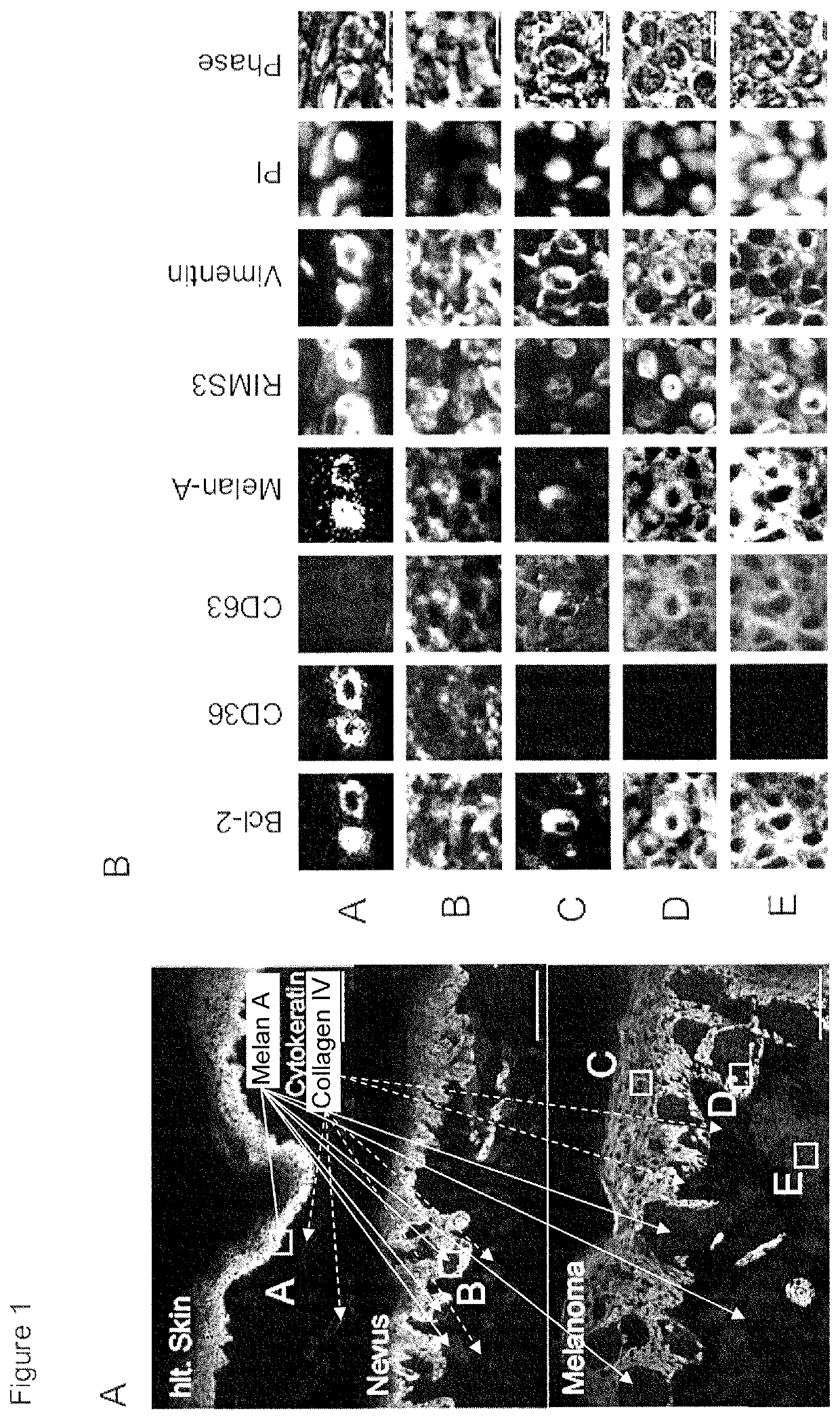A method for characterizing melanocytic lesions
a melanocytic and lesions technology, applied in the field of melanocytic lesions characterization, can solve the problems of inability to distinguish between subtypes/variants of a disease, inability to discriminate between malignant and benign lesions, time-consuming and laborious, etc., to simplify a time-consuming and hence expensive procedure, and facilitate diagnosis
- Summary
- Abstract
- Description
- Claims
- Application Information
AI Technical Summary
Benefits of technology
Problems solved by technology
Method used
Image
Examples
example
[0073]Using a systemic approach with the multi-epitope-ligand-cartography (MELC)-technology, we analyzed protein expression profiles (PEP) in nevi and BRAFV600E+ superficial spreading melanomas (SSM) for key transformation events.
[0074]To obtain antibodies applicable in the MELC-technology, 814 randomly selected hybridoma supernatants from the antibody production facility of the Helmholtz-Centre in Munich, and 173 commercially available antibodies were subjected to a screening algorithm to obtain those antibodies giving a specific staining in tissue (epidermis and dermis) for melanoma cells (n=57). We reasoned that key factors of the transformation process would appear in melanomas but not in nevi. We also selected antibodies that were specific for melanoma-associated keratinocytes (n=7) or for melanomas and keratinocytes (n=12). Single tissue sections of 6 BRAFV600E+ SSM, 6 junctional and compound nevi (3 / 3), and 6 samples of healthy skin were stained by the whole antibody set. For...
PUM
| Property | Measurement | Unit |
|---|---|---|
| Level | aaaaa | aaaaa |
Abstract
Description
Claims
Application Information
 Login to View More
Login to View More - R&D
- Intellectual Property
- Life Sciences
- Materials
- Tech Scout
- Unparalleled Data Quality
- Higher Quality Content
- 60% Fewer Hallucinations
Browse by: Latest US Patents, China's latest patents, Technical Efficacy Thesaurus, Application Domain, Technology Topic, Popular Technical Reports.
© 2025 PatSnap. All rights reserved.Legal|Privacy policy|Modern Slavery Act Transparency Statement|Sitemap|About US| Contact US: help@patsnap.com



